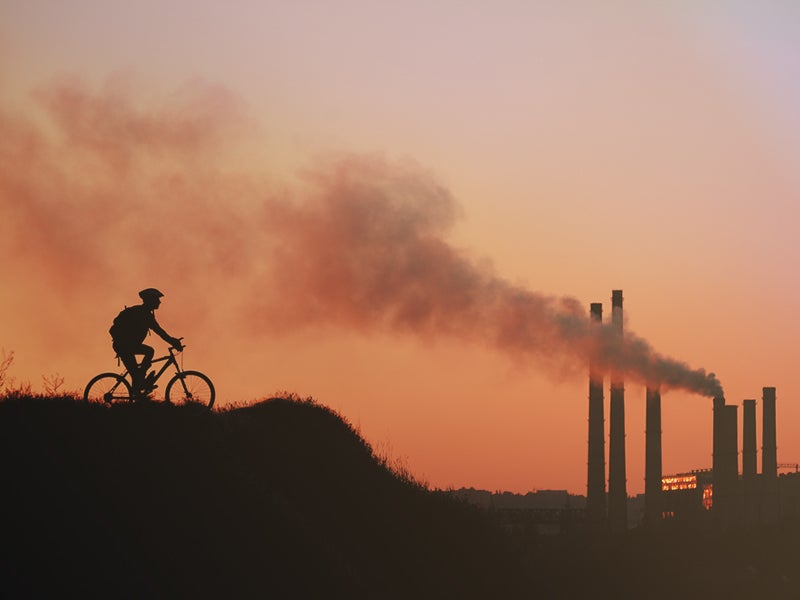Health and Environmental Groups Decry Radical Attacks on Anti-Smog Protections
A coalition of green groups and health advocates refutes polluters’ discredited arguments against the Clean Air Act.

This page was published 9 years ago. Find the latest on Earthjustice’s work.
Led by a major coal producer and by Big Oil, polluters have attacked the most recent protections the EPA established to fight ozone, or smog, pollution. They’ve even gone after the Clean Air Act itself. Today, the American Lung Association, the Sierra Club, the Natural Resources Defense Council and Physicians for Social Responsibility, represented by Earthjustice, filed a brief in court refuting these attacks.
On April 22, polluters and their allies took aim at the new, 2015 EPA smog standard of 70 parts per billion (ppb), claiming in legal briefs that the limit is too hard and too expensive to meet. They even argued that the Clean Air Act itself is unconstitutional. As they filed their attacks on Earth Day, the polluters at least demonstrated their commitment to recycling: These arguments have already been heard and rejected by the U.S. Court of Appeals for the D.C. Circuit and the Supreme Court. The arguments are founded on misinformation. They were no good legally when they were first made, and they’re no better warmed over.
The polluters also argued that the EPA didn’t show that better smog protection is warranted. In large part, this argument is another recycled one that the D.C. Circuit firmly slapped down just three years ago.
Plus, the claim that more protection against smog is uncalled for is just silly. The EPA looked at more than 1,000 new scientific studies, including many showing that smog at levels below the prior standard is harmful for people and the environment. In fact, the nation’s leading medical societies endorsed a far more protective standard than the one the EPA ended up choosing. More than half the people in the United States live in areas with unhealthy ozone levels. Smog triggers asthma attacks and makes it harder to breathe. It likely also kills people. And it’s not just bad for humans—it also harms plants and trees by making them grow more slowly, and it can blacken plant leaves. It damages not only forests, but also food crops.
It was long past time for the EPA to do its job to protect people and the environment by setting a stronger smog standard. For almost a decade, the EPA’s independent science advisers have urged the EPA to set a smog standard that will protect public health and the environment. In 2008, the EPA disregarded this advice and set the standard at a level of 75 ppb. Finally, in 2015, the EPA made the standard slightly more protective by setting it at the highest (least protective) end of its advisers’ range: 70 ppb.
Polluters’ complaints about the EPA’s modest step have no basis. If they did, the polluters wouldn’t be serving up the same tired lines they’ve peddled unsuccessfully for the past four decades. Polluters have long said it’s impossible to clean up the air. Yet we’ve done it; air pollution has fallen by about 70 percent since 1970. They’ve long said that better health protections will cause economic catastrophe, yet the economy’s grown by about 250 percent over this time.
So, thanks to clean air protections, we’ve made a lot of progress. We’ve gotten less air pollution and more economic growth. Cleaner air means people’s lives have been improved, since, for example, they don’t have to miss school or work because of breathing problems. Cleaner air means lives have been saved.
With half the people in the nation breathing unhealthy air, we must do better by making legal protections even more effective, and the first step is to not give into polluters.
Earthjustice’s Washington, D.C., office works at the federal level to prevent air and water pollution, combat climate change, and protect natural areas. We also work with communities in the Mid-Atlantic region and elsewhere to address severe local environmental health problems, including exposures to dangerous air contaminants in toxic hot spots, sewage backups and overflows, chemical disasters, and contamination of drinking water. The D.C. office has been in operation since 1978.